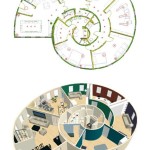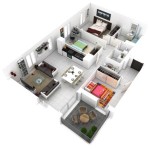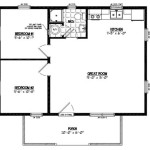5 Bedroom House Plans Single Story No Garage
Single-story homes offer a range of advantages, including accessibility and ease of maintenance. For larger families, a five-bedroom layout within a single story can prove particularly appealing. This article explores various aspects of single-story, five-bedroom house plans that exclude a garage, examining factors such as design considerations, space optimization, and potential benefits.
Eliminating the garage from the design opens up numerous possibilities for lot utilization and house layout. The freed-up square footage can be allocated to additional living space, expanding the bedrooms, creating a larger kitchen and dining area, or incorporating features like a home office, a playroom, or a media room. Additionally, the absence of a garage can reduce construction costs, allowing for investment in higher-quality materials or other desirable features.
Designing a five-bedroom single-story house without a garage requires careful planning to ensure efficient use of space and comfortable living. One common approach involves creating a central living area, often encompassing the kitchen, dining, and family room, with the bedrooms radiating outwards. This layout promotes a sense of connection while still providing a degree of privacy for each bedroom.
Another popular design strategy involves separating the bedrooms into two wings, often with the primary suite on one side and the remaining bedrooms on the other. This separation can create distinct zones within the house, offering parents a private retreat while providing children with their own space. A central living area can still serve as a communal gathering point, connecting the two wings.
Consideration should be given to the placement of bathrooms. In a five-bedroom house, multiple bathrooms are essential for convenience and functionality. One strategy involves incorporating en-suite bathrooms in some or all of the bedrooms, while another approach might include strategically placing shared bathrooms to serve specific groups of bedrooms. Careful planning can minimize traffic flow issues and ensure everyone has easy access to bathroom facilities.
Outdoor living spaces can play a significant role in enhancing the functionality and enjoyment of a single-story house without a garage. The area typically occupied by the garage can be transformed into a patio, a deck, or an outdoor kitchen, providing ample space for relaxation and entertainment. These outdoor areas can seamlessly integrate with the indoor living spaces, creating a cohesive and inviting environment.
The absence of a garage necessitates alternative parking solutions. A driveway, a carport, or designated on-street parking can provide sufficient parking space. Landscaping can be used to visually integrate these parking areas into the overall design, minimizing their impact on the aesthetic appeal of the property.
Addressing storage needs becomes crucial when designing a house without a garage. Incorporating ample closet space within the bedrooms, utilizing attic space, and incorporating built-in storage solutions throughout the house can compensate for the lack of garage storage. Careful planning during the design phase can ensure that storage needs are adequately addressed without compromising the functionality of the living spaces.
Flexibility in design is a key advantage of building a single-story house without a garage. The available square footage can be tailored to specific needs and preferences. For instance, one bedroom could be converted into a home office, a guest room, or a hobby room, depending on the changing needs of the family.
Accessibility is a significant benefit of single-story homes, making them ideal for individuals with mobility limitations or families with young children. Eliminating stairs enhances safety and simplifies daily living. The freed-up space from the absence of a garage can be further utilized to enhance accessibility features, such as wider hallways and doorways.
Maintenance is typically simpler in single-story homes compared to multi-story homes. Tasks like cleaning gutters and windows are easier to manage without the need for ladders or scaffolding. This ease of maintenance can contribute to lower long-term costs and increased convenience.
Cost considerations vary depending on numerous factors, including location, materials, and design complexity. While eliminating the garage can reduce initial construction costs, these savings might be offset by the need for alternative parking solutions or additional storage solutions. A thorough cost analysis should be conducted during the planning phase.
Numerous online resources and architectural services specialize in providing pre-designed or custom house plans. Exploring these resources can provide inspiration and help homeowners visualize the possibilities for their five-bedroom single-story house without a garage. Working with a qualified architect or designer can ensure that the final plan meets specific needs and adheres to local building codes.
Lot size and shape play a crucial role in determining the suitability of a specific house plan. A long, narrow lot might be well-suited for a linear layout, while a wider lot might accommodate a more expansive design. Careful consideration of the lot dimensions is essential during the planning process.

Country Style Home 5 Bedrms 3 Baths 3016 Sq Ft Plan 187 1007

5 Bedroom House Plans Monster

The Best 5 Bedroom Barndominium Floor Plans

Single Level House Plans Without Garage Drummondhouseplans

5 Bedroom House Plans Monster

The Best 5 Bedroom Barndominium Floor Plans

5 Bedroom House Plans Under 3 000 Sq Ft Houseplans Blog Com

V 384 House Floor Plans 5 Bedroom With Bathroom And 2 Car Port Blueprints Modern Two Levels Home Gable Roof Story Design Double Y Construction Plan

5 Bedroom House Plans Monster

5 Bedroom House Plans Under 3 000 Sq Ft Houseplans Blog Com
Related Posts








